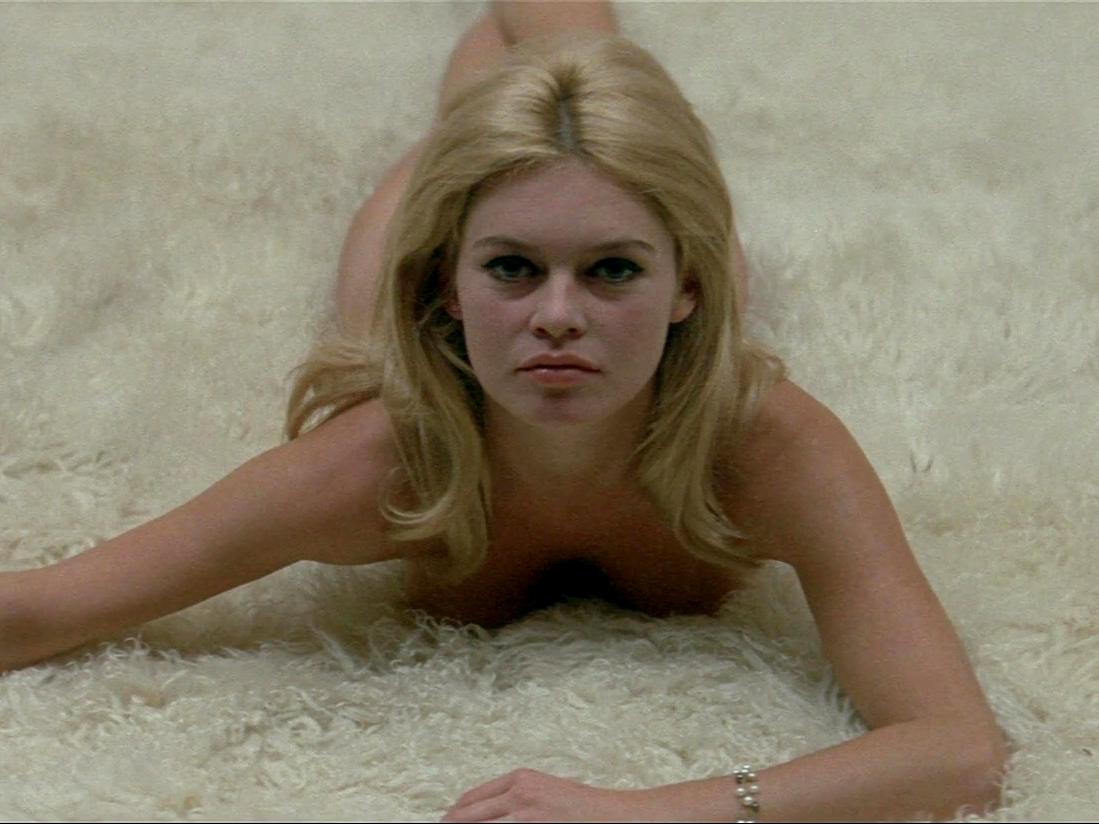
Paul is hired by a producer to rework Fritz Lang's film adaptation of The Odyssey, currently being shot. His wife, Camille, joins him in Capri, but their relationship turns sour.
EN
“When I think about it, Le mépris, seems to me, beyond its psychological study of a woman who despises her husband, the story of castaways of the Western world, survivors of the shipwreck of modernity who, like the heroes of Verne and Stevenson, one day reach a mysterious deserted island, whose mystery is the inexorable lack of mystery, of truth that is to say. Whereas the Odyssey of Ulysses was a physical phenomenon, I filmed a spiritual odyssey: the eye of the camera watching these characters in search of Homer replaces that of the gods watching over Ulysses and his companions.
A simple film without mystery, an Aristotelian film, stripped of appearances, Le mépris proves in 149 shots that in the cinema as in life there is no secret, nothing to elucidate, merely the need to live – and to make films.”
Jean-Luc Godard1
“Then there was the shift to color. Starting with A Woman Is a Woman and with increasing force and daring in Contempt and Made in USA and La Chinoise and Two or Three Things I know About her, Godard brought us face to face with color—bold primary colors that flattened the frame, coming at us in all kinds of configurations. I used to be fond of saying that my favorite modern painters were Jean-Luc Godard and Michelangelo Antonioni, but I really meant it.”
Martin Scorsese2
- 1Jean-André Frieschi, « Jean-Luc Godard : Le mépris » , Cahiers du Cinéma (August 1963): 31. [The English translation was found in Godard on Godard, edited by Tom Milne, Da Capo Press, 1986.]
- 2Martin Scorsese, “Godard is perhaps dead”, Cahiers du Cinéma, 13 Octobre 2022.
NL
“Mise-en-scène is heel eenvoudig het geheel van het werk dat op een filmset gepresteerd wordt: het werken met decor, met rekwisieten, met acteurs, met licht, met klank, met camera. Mise-en-scène, dat ziet men in Le mépris (Godard), in Minnelli’s Two Weeks in Another Town. Mise-en-scène is een arbeidsproces. Op de set wordt een ingewikkelde en subtiele schakeling tot stand gebracht van dingen, mensen en machines. Het ambachtelijke en het technologische, de rigoureuze technische en de veel onduidelijkere creatieve werkingsprocedures worden er moeizaam op elkaar gepast. Heterogeniteit van de arbeidsculturen: de ambachtsman aan het decor, de creatieve concentratie van de acteur, de precieze technologie van de film-apparatuur. Arbeidsculturen zonder een gemeenschappelijke taal samengebracht door de regie. Mise-en-scène is een productieproces: de ingewikkelde schakeling van het arbeidsproces moet resulteren in een uniek, eenmalig product, namelijk die ene, specifieke filmopname. Meteen daarna wordt alles afgebroken en weer opgebouwd in een andere schakeling. Mise-en-scène als esthetische categorie heeft te maken met het bewustzijn van dit unieke karakter van iedere filmopname. Mise-en-scène is de loochening van filmproductie als serie-productie. Het is de beklemtoning van een permanente staat van geïnspireerde bricolage. Iedere filmopname is een overwinning op haar onwaarschijnlijkheid. ‘Mettre en scène, c’est machiner, et d’une machination on dira qu’elle est bien ou mal montée.’”
Dirk Lauwaert1
- 1Dirk Lauwaert, “Mise-en-scène” in Dromen van een expeditie: geschriften over film 1971-2001 (Nijmegen: Vantilt, 2006).
FR
« Le sujet du Mépris, ce sont des gens qui se regardent et se jugent, puis sont à leur tour regardés et jugés par le cinéma, lequel est représenté par Fritz Lang, en somme la conscience du film. »
Jean-Luc Godard

